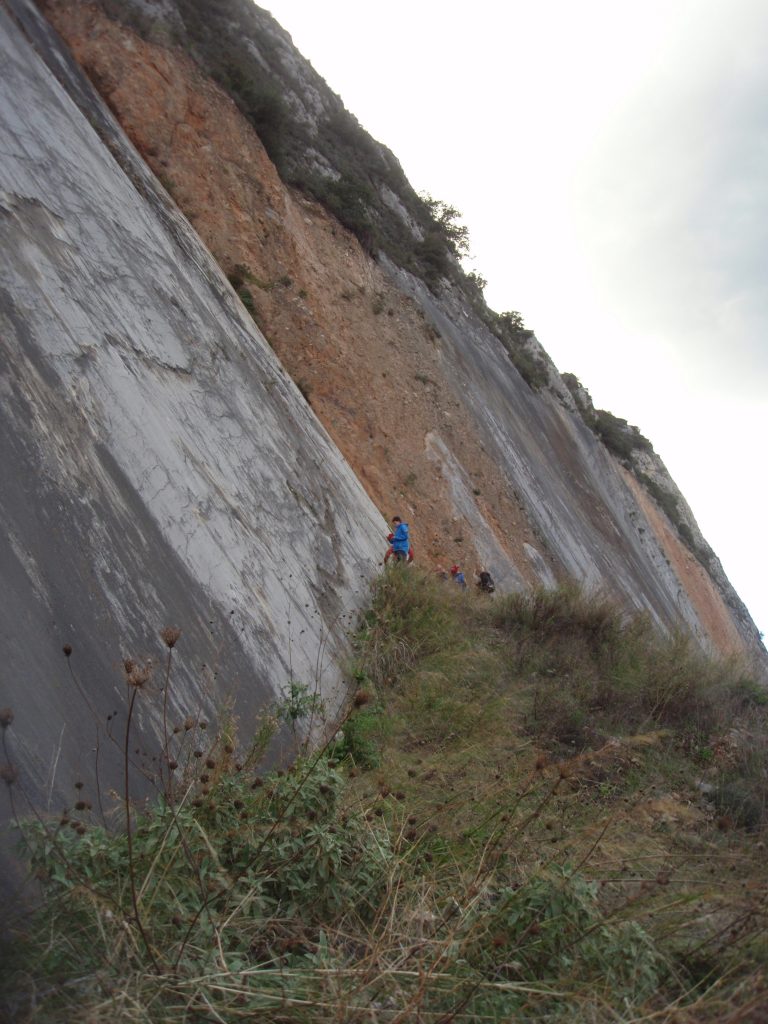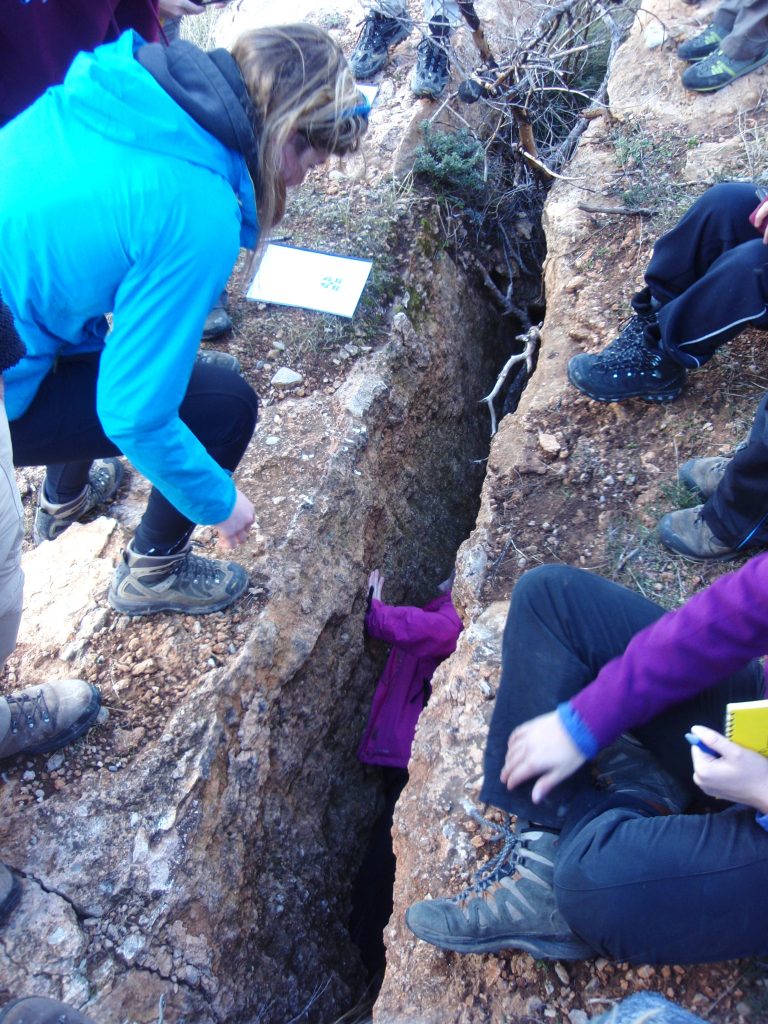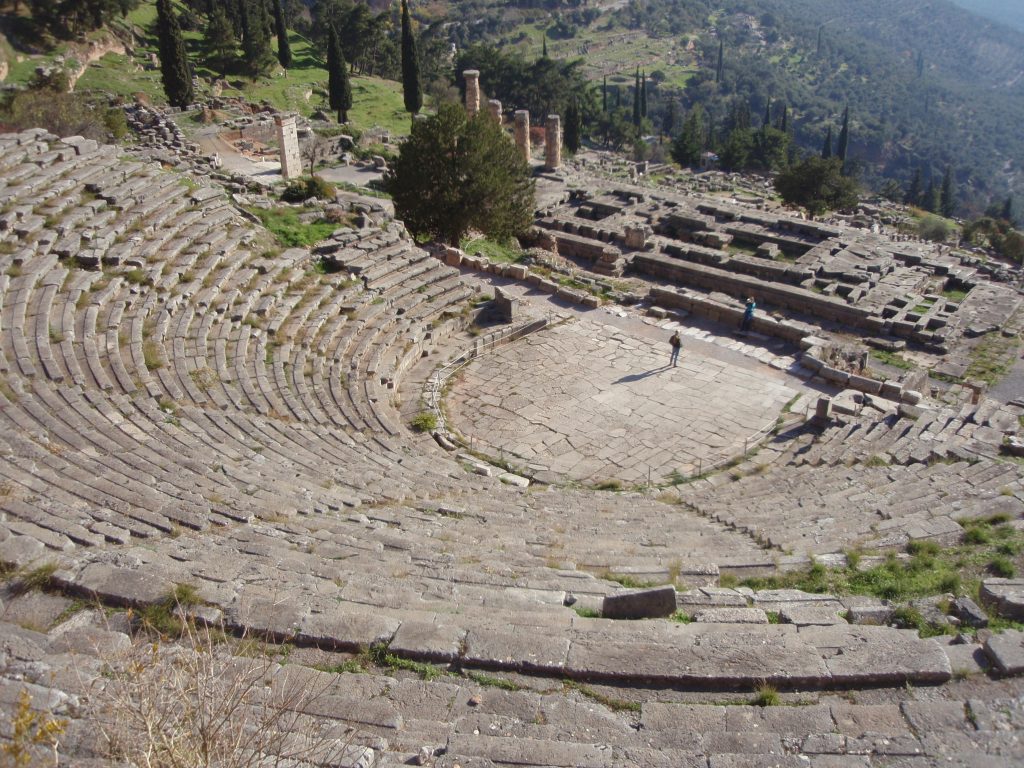On the 6th December 2013, 20 part II students shed their woolly scarves and bobble hats and set off for sunny Greece. The aim of the trip is to get to grips with a region of active continental extension, involving the simultaneous interpretation of earthquake focal mechanisms, surface fault ruptures and coastal vertical motions.
During the first part of the trip, the group is based in Loutraki, a small town located at the eastern end of the Gulf of Corinth. From here, day one explores the nearby Perachora peninsular where an elevated ancient Greek harbour starkly illustrates the ongoing geological uplift over very human timescales. Further round the coast, we came to a scary illustration of the active geomorphological response of the landscape to this uplift where a small chapel had been buried beneath a three metre thick mudslide only 3 days earlier, leaving only the rafters protruding.

A highlight of this section of the trip is a visit to the Corinth canal, the geologist’s dream cross-section that has been hewn through the rock to reveal excellently preserved tilted fault blocks. In addition, the drowned temple of Kenchriae proved a popular stop both for its archaeological significance and beautiful waters to have a cooling swim before lunch.
The second half of the trip is run from Kamena Vourla in the gulf of Evia, and the overland trip on day four allowed the up-close examination of a fault scarp generated in a 1981 earthquake. The unfortunate loss of a notebook down the fault break provided an opportunity to explore the inner-workings of a fault plane in fine detail!

On day 6, we took a break from the Cenozoic carbonates to study an older ophiolite complex of Jurassic age revealed in the high hills of Anavra. The fantastic range of metamorphic features was only slightly hampered by the complete lack of exposure – the entire area being blanketed in a foot of snow! Eventually finding our way down out of the hills, we warmed up over a Greek coffee in Anavra.
The last couple of days were spent exploring the multiple fault scarps and half grabens located to the west towards Mount Parnassos and were pleasantly broken by a quick swim in the hot springs at Thermopylae.
The evening flight time back from Athens presents a fantastic opportunity to explore the Greek ruins at Delphi in the morning on the last day of the trip. The beautiful setting and gorgeous sunshine served to dispel the last vestiges of the night before!

The wealth of human history in Greece is certainly matched in grandeur by the fascinating geology! The trip provides a perfect platform for the Part II students to advance their knowledge in a variety of areas including active tectonics, sedimentology and metamorphic petrology. In addition, the fine Mediterranean cuisine and friendly communal evenings combine to create one of our favourite geology field trips.
Mark Hoggard MSci 2007-2011, PhD 2011-2015 and Laurence Cowton MSci 2009-2013, PhD 2013-2017

